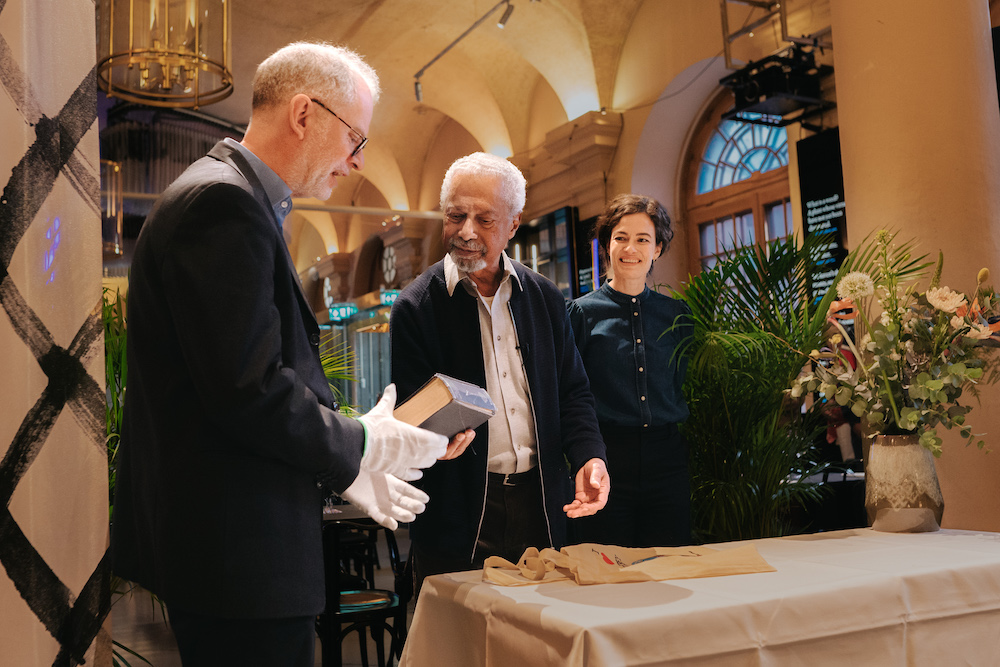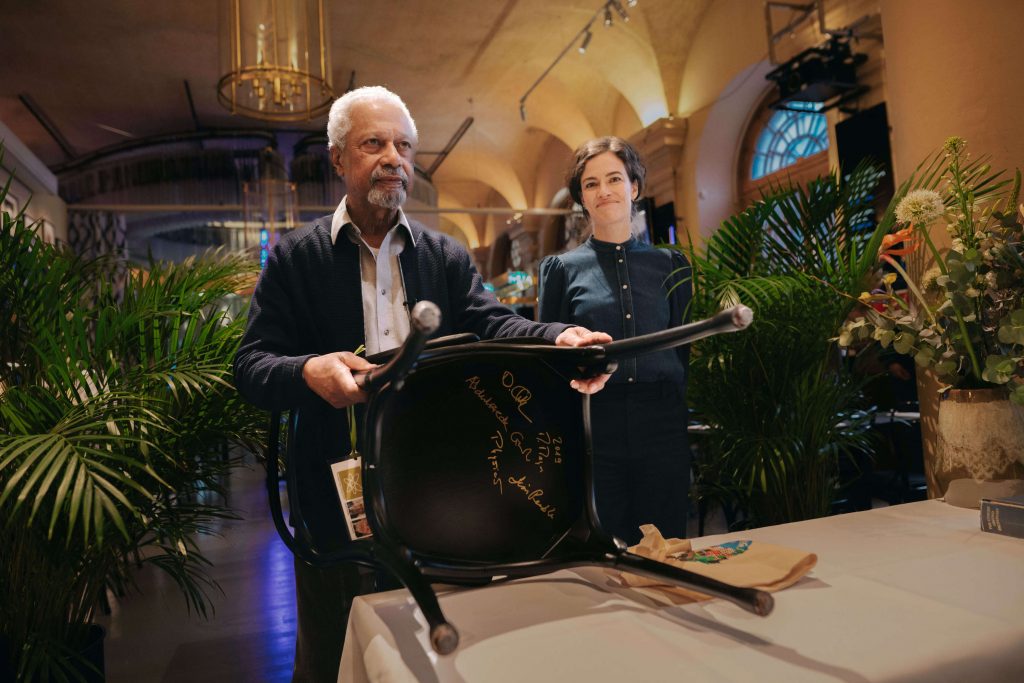Abdulrazak Gurnah brought with him his Oxford English Dictionary, which has sat on his desk and he has used for decades. Gurnah’s notes and underlinings in the well-worn dictionary confirm that it has served as an important tool for him. He also took the opportunity to sign a chair in the museum’s Bistro. The chair had previously also been signed by the 2019 physics laureates.
“I thought I was supposed to sign all the chairs,” he said at the sight of the Bistro’s sixty black chairs. The crowd that had gathered to watched the signing ceremony burst into laughter.
-

Abdulrazak Gurnah donated his dictionary to the Nobel Prize Museum. Ulf Larsson, curator receives the gift. Photo: Clément Morin
-

Abdulrazak Gurnah took the opportunity to sign a chair in the museum's Bistro. ON his side is museum director Erika Lanner. Photo: Clément Morin
-
Abdulrazak Gurnah donated his dictionary to the Nobel Prize Museum. Ulf Larsson, curator receives the gift. Photo: Clément Morin
-
Abdulrazak Gurnah took the opportunity to sign a chair in the museum's Bistro. ON his side is museum director Erika Lanner. Photo: Clément Morin
“We always ask laureates who visit us to bring along an object that has meant something special to them. It helps us to convey their stories,” says Erika Lanner, Director of the Nobel Prize Museum.
The Nobel Prize Museum has a growing collection of donated artefacts related to the laureates. These include such items as a handwritten manuscript from physics laureate Albert Einstein and the shawl that peace prize laureate Malala Yousafzai wore when she gave a speech to the UN General Assembly. Such artefacts help the museum to tell the stories of the laureates. These objects are usually handed over during the Nobel Week in December.
More information about the conversation at the Nobel Prize Musuem that takes place on Friday, 29 April.
For further information please contact
Rebecka Oxelström, presschef, +46 734 12 66 75, rebecka.oxelstrom@nobelprize.org
Nobel Prize Museum
The Nobel Prize shows that ideas can change the world. The courage, creativity and perseverance of the Nobel Laureates inspire us and give us hope for the future. Films, in-depth tours, and artefacts tell the stories of the Laureates and their contributions ‘for the greatest benefit to humankind’. Based on the Nobel Prize’s unique combination of fields – natural sciences, literature and peace – we examine the greatest challenges of our time and show how we can respond to them through science, humanism and collaboration. With our exhibitions, school programmes, lectures and conversations, we at the Nobel Prize Museum strive to engage the public in making a better world. Today we are located at Stortorget in Gamla Stan, Stockholm’s Old Town district. We are planning to create a new home for our public outreach activities at Slussen in downtown Stockholm.
Disclaimer: Nobel Prize Museum is not directly or indirectly involved in the process of nominating or selecting Nobel Prize laureates. These procedures are strictly confidential and regulated by the Nobel Prize awarding institutions.
© Nobel Prize Museum 2022. Nobelpriset®, Nobel Prize® and the Nobel Prize medal are registered trademarks of the Nobel Foundation.